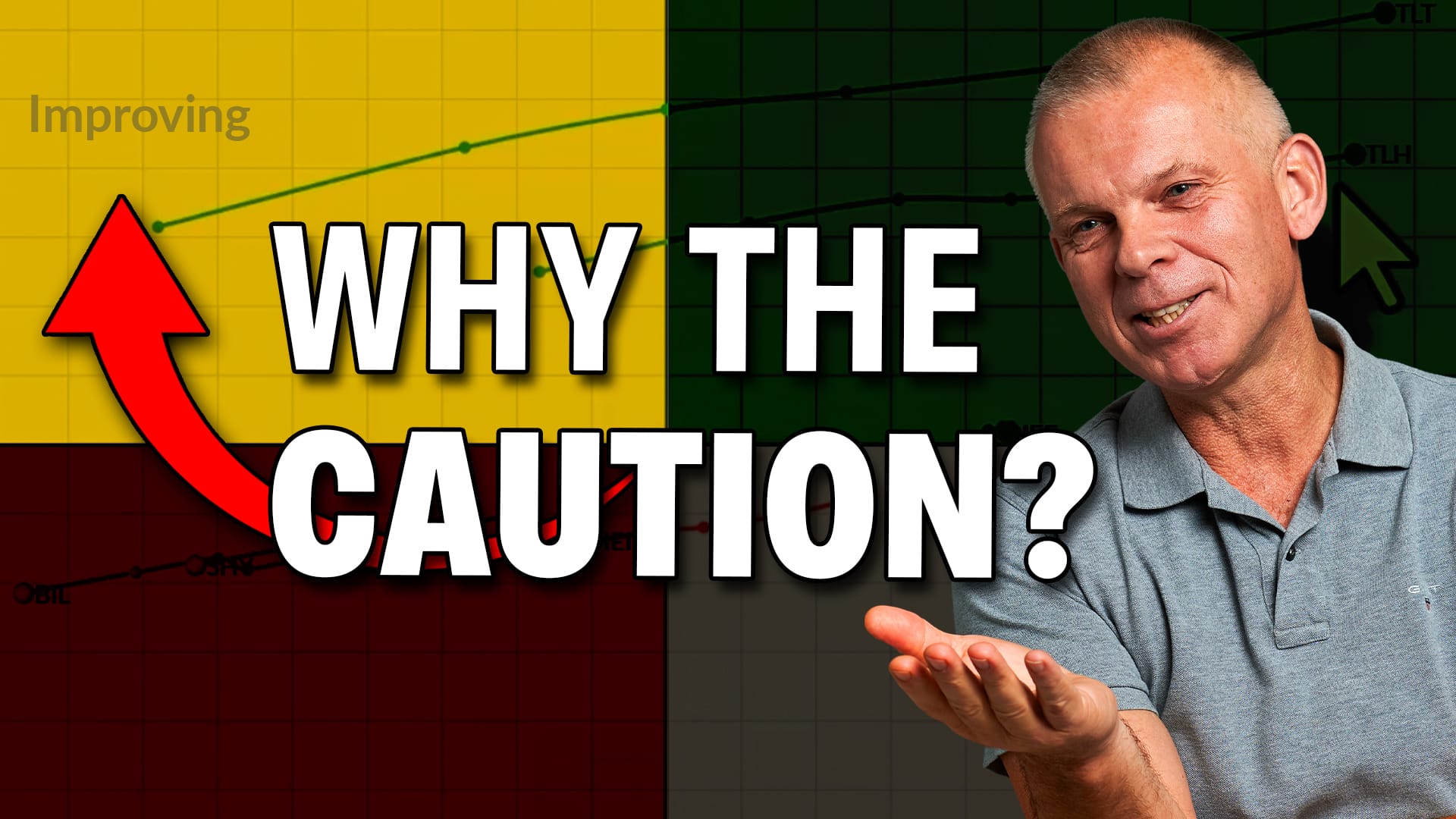DOUBLE TROUBLE FOR IWM -- QQQQ TESTS TREND LINE SUPPORT -- NDX BULLISH PERCENT HITS NEW LOW - BONDS REMAIN STRONG - NEW LOWS EXPANDING AGAIN
IWM BATTLES SUPPORT ... Today's Market Message was written by Arthur Hill. John Murphy will return tomorrow. - Editor
There is a big battle raging at support for the Nasdaq 100 ETF (QQQQ) and the Russell 2000 ETF (IWM). Chart 1 shows the long-term trend with weekly prices for IWM. The ETF has been testing support from the August lows since mid November (five weeks now). Trading since mid November has been choppy to say the least. This battle reinforces the importance of the support zone and a break would confirm the large double top that is currently working. A confirmed double top would project further weakness towards the next support area around 66.

Chart 1
Chart 2 shows that it has been a rough year for the Russell 2000 ETF (small-caps). The ETF traded between support at 73 and resistance at 85 the entire year. The midpoint of this range is at 79 and the 250-day moving average is around 80. (There are approximately 250 trading days in a year: 365 days less 52 weekends and nine holidays.) The 79-80 area marked a serious battle zone in 2007 with numerous crosses throughout the year. IWM never recovered after the October-November slide and failed to move back above 80 on the last attempt. The cup is half empty as long as IWM trades below 80.

Chart 2
QQQQ TRIES TO HOLD BOUNCE ... Chart 3 shows the Nasdaq 100 ETF (QQQQ) with 10-period RSI. I highlighted this setup in mid November. The green arrows show when RSI moved below 50 and the green dotted lines show when RSI moved back above 50. This level acts as a support zone in uptrends. The February and August breaks above 50 held, but the November break is already getting a challenge. This RSI signal is under threat and a move back below 50 would show weakness.

Chart 3
Weekly RSI is dependent on Friday's close in QQQQ. The current candlestick shows the week so far and the close is not set. RSI is current at 46.79 with QQQQ closing at 49.88 on Wednesday. A close below 50 (in QQQQ) on Friday would put RSI back below 50 for the week. On the price portion of the chart, QQQQ is finding support around 50 from the July 2006 trend line, the November lows and the 40-week moving average. This moving average is equivalent to the 200-day moving average and a break below this key indicator would have long-term implications.
NDX BULLISH PERCENT HITS NEW LOW... Chart 4 shows the Nasdaq 100 Bullish Percent Index ($BPNDX) for the year-to-date. The Bullish Percent Index (BPI) index showed weakness when the Nasdaq 100 traded near its high in late October (blue dotted line). This foreshadowed the sharp decline in November. The BPI is once again showing underlying weakness within the Nasdaq 100. NDX remains above its November low, but the BPI moved below this low and below 35%. Fewer than 35% of the Nasdaq 100 components are on Point & Figure buy signals.

Chart 4
Chart 5 shows performance charts for the Nasdaq 100 ETF (QQQQ) and the Nasdaq 100 Equal Weight ETF (QQEW). As its name suggests, QQEW treats all components equally, regardless of market cap or technological prowess. Both are up for the year, but QQQQ is up twice as much as QQEW this year. This tells us that money favors large-cap techs. The bottom indicator shows the price relative, an indicator that plots the QQQQ:QQEW ratio. It edged up from March to September and then took off in October. This is when QQQQ really started outperforming QQEW.

Chart 5
BONDS REMAIN STRONG... The iShares 20+ Year Bond ETF (TLT) got a nice bounce off support and remains in a clear uptrend. Chart 6 shows the long-term trend with weekly prices. TLT broke resistance at 88 in September, consolidated a few weeks and then surged to new highs in November. The long-term trend is clearly up. Chart 7 shows the medium-term trend with daily prices. TLT broke resistance at 90 and this level then turned into support. The 50-day moving average and June trend line also confirm support around 90. TLT got a nice bounce off this support level the last three days.

Chart 6

Chart 7
Continued strength in bonds could be bearish for stocks. Even though a rise in bonds translates into a decline in rates, it also signals a flight to quality or safety. Chart 8 shows an inverse relationship between bonds and stocks since early October. The decline in the S&P 500 ETF (SPY) was accompanied by a sharp advance in the iShares 20+ Year Bond ETF (TLT) from early October to 26 November. Stocks rebounded from 26 November to 10 December and bonds took a hit (yellow area). Stocks started down last week and bonds started up again this week to keep the inverse relationship going.

Chart 8
NEW LOWS OUTPACING NEW HIGHS... The next two charts show a Net New Highs indicator for the Nasdaq and the NY Composite. Net New Highs equals new 52-week highs less new lows. I applied a 10-day moving average to smooth the data series. In general, readings above zero are bullish and readings below zero are bearish. In other words, the bears are in control when new lows exceed new highs. The bulls are in control when new highs exceed new lows. It's pretty simple and straightforward.
Chart 9 shows the 10-day SMA for Net New Highs for the Nasdaq. This indicator is negative for the third time this year (red dotted lines). The indicator even remained negative when the Nasdaq rallied from late November to early December (blue arrow). Most recently, the indicator moved back above -100 and new 52-week lows are seriously outpacing new 52-week highs on the Nasdaq. SharpCharts users can click on this chart to see the settings and save it.

Chart 9
Chart 10 shows the 10-day SMA for Net New Highs on the NY Composite. The picture is bearish overall, but the Net New Highs are holding up better on the NY Composite. The indicator poked its head into positive territory last week (green arrow), but quickly fell back after the sharp decline on 11 Dec (the day the Fed cut interest rates). New 52-week lows are expanding again as the indicator moved back below 50 this week. A move into positive territory is needed to get the bulls moving. SharpCharts users can click on this chart to see the settings and save it.

Chart 10








